1805
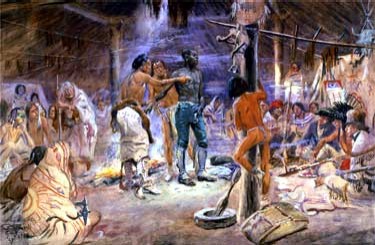
African American slave York entered Montana as a part of the Lewis and Clark expedition. ( Montana Newspaper Association Inserts, January 18, 1929)
1807
Manuel Lisa began Montana’s fur trade era by constructing a fort at the confluence of the Yellowstone and Big Horn rivers.
Edward Rose, who later lived for several years among the Crows, served on Lisa’s expedition. Several other African Americans eventually worked in the fur trade in Montana before the industry came to an end by the 1840s. (Kenneth Wiggins Porter, “Negroes and the Fur Trade,” Minnesota History, December 1934, 424-433; Willis Blenkinsop, “Edward Rose,” as found in Leroy R. Hafen, ed., The Mountain Men and the Fur Trade of the Far West, v. IX, pp. 335-345)
1825
Jim Beckwourth first entered Montana as a member of William Ashley’s third western expedition. Reputedly born in Virginia of a slave mother and white overseer, Beckwourth became legendary as a mountain man, spending time in Montana, Colorado, New Mexico, Utah, and California. He gave a detailed—and exaggerated—account of his life which was published as Life and Adventures of Jim Beckwourth (1856). He died near Ft. C.F. Smith in 1866, working as a mediator between the U.S. Army and a group of Crow Indians. (Delmont R. Oswald, “James P. Beckwourth,” as found in Leroy R. Hafen, ed., The Mountain Men and the Fur Trade of the Far West, v. VI, 37-60)
1832
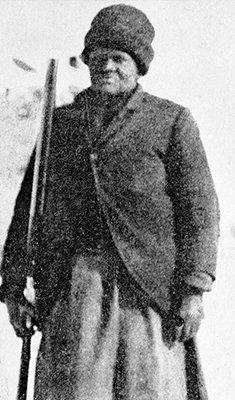
Mary Fields was born in Tennessee. She moved to Montana in 1884, where she worked at St. Peter’s Mission near Great Falls. She worked at the school until a falling out with the Catholic administration led to her ouster in 1895. She then moved to Cascade and found work as a mail coach driver for the U.S. Postal Service, leading to her nickname “Stagecoach Mary.” Fields passed away in 1914 and is buried in Cascade’s Hillside Cemetery. (Mary Fields, vertical files, MHS)
1837-1840
Smallpox epidemic killed many Montana Indians.
1841
Father DeSmet built St. Mary's Mission near present-day Stevensville.
1846
American Fur Co. built Ft. Benton on the Upper Missouri River deep in Blackfeet country.
c. 1858
Charles “Smoky” Wilson was born in St. Louis, Missouri. Wilson came to Montana in the late 1860s, travelling as far as the Bozeman area. He worked for Nelson Story as a horse wrangler until he found work as an interpreter for the U.S. Army, after having learned the Crow language. One of his claims to fame was that he helped bury the remains of the Seventh Cavalry soldiers killed at the Battle of the Little Big Horn. After several years as an interpreter, Wilson worked at the Crow reservation, performing such tasks as mailman, interpreter, and policeman. Eventually he was adopted by the Crows, and allowed a full share of benefits and land. One source claims he was married several times, to both Native American and African American women. At the time of his death in 1936, he was survived by a son, John E. Wilson. ( Hardin Tribune-Herald, “Colorful Career of ‘Smoky’ Is at an End,” July 24, 1936; Charles Wilson, vertical file, MHS).
1862
U.S. Congress passed the Homestead Act. Along with whites, African Americans used this and later land legislation to obtain homesteads in Montana.
While reports of gold strikes in the Deer Lodge Valley and Gold Creek came from what would become Montana Territory as early as the 1850s, the 1862 strike at Grasshopper Creek and the rise of Bannack, and subsequent strikes at Alder Gulch (Virginia City, 1863), and Last Chance Gulch (Helena 1864), triggered the Montana gold rush.
1863
The Emancipation Proclamation freed forever “...all persons held as slaves within any State or designated part of a State the people whereof shall then be in rebellion against the United States.”
1864
1865
Civil War ended.
Thirteenth Amendment passed, abolishing slavery.
1866
Samuel Lewis arrived in Montana. Born in Haiti, Lewis was a well-respected barber and residential developer in Bozeman, where he owned several charming rental properties. He died a prosperous man in 1896; his Bozeman residence is listed in the National Register of Historic Places. (Samuel W. Lewis, vertical files, MHS.)
Congress authorized the creation of six all-African American regiments. Later dubbed “Buffalo Soldiers,” elements of these units served in Montana, most notably at Forts Missoula, Assiniboine, Harrison, Shaw, Custer, and Keogh. (Afro-Americans-Military, vertical file, MHS; AGO General Order No. 56, Aug. 1, 1866, and AGO General Order No. 92, Nov. 23, 1866; Robert M. Utley, Frontier Regulars: The United States Army and the Indian, 1866 – 1891 (1973), p. 12.)
1867
“An Irish Democrat named Lynch” murdered black Helena resident Sammy Hays during a post-election riot. ( Helena Weekly Herald, September 5, 1867, and Helena Daily Herald September 3, 1869.)
1870
The Census listed 183 African Americans in Montana Territory out of a total population of 20,595.
1872
The Territorial Legislature voted to segregate African American children in schools. The law was overturned in 1883. (J.W. Smurr, “Jim Crow Out West,” J.W. Smurr and K. Ross Toole, eds., Historical Essays on Montana and the Northwest , pp. 149-203.)
1873
E.T. Johnson elected mayor of the unincorporated city of Helena on May 22, 1873. ( Helena Weekly Herald, May 22, 1873 (p. 7)) This is likely Edward T. Johnson, a Helena resident since at least 1868, who in the 1870 census is identified as a 32-year-old barber from Washington D.C. with a personal estate worth $1000. The 1868 Helena City Directory listed him as E.T. Johnston, born in D.C., working as a barber and residing on Main Street.
1876
African American Isaiah Dorman, an interpreter for the United States Army, died at the Battle of the Little Big Horn. (Robert J. Ege, “Braves of All Colors: The Story of Isaiah Dorman, Killed at the Little Big Horn,” Montana: the Magazine of Western History , January 1966, pp. 35-40; Roland C. McConnell, “ Isaiah Dorman and the Custer Expedition ,” Journal of Negro History, July 1948, pp. 344-352.)
1879
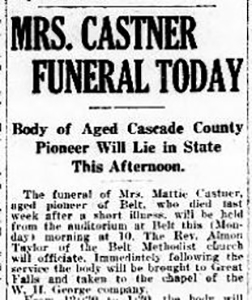
Mattie Bost, African American, married white John Castner. Together they built the first cabin in Belt, which eventually evolved into a hotel, restaurant, and stage station that Mattie ran while John built up mining and real estate holdings. She later operated a cattle ranch in the Highwood Mountains, and was well thought of because of her generosity. When Mattie passed away in 1920, her estate was worth $25,000. ( Great Falls Daily Tribune, April 5 and 7, 1920; Ethel Castner Kennedy and Eva Lesell Stober, Belt Valley History, 1877-1979, pp. 21-22; Mattie Bost Castner, vertical file, MHS.)
1880
U.S. Census found 346 African Americans in Montana out of a population of 39,159.
1881
William Woodcock, a U.S. Marshal's servant, sued a Butte restaurant under the 1875 Civil Rights Act after he reported its proprietor asked him to leave. In 1883, the court ruled in his favor and awarded him the minimum settlement of $500. (Smurr, “Jim Crow Out West,” 173–175; “The Two Colors of the Chop House Affair,” The Weekly Miner, December 20, 1881, p. 5; "Montana News," The Daily Enterprise, December 10 1883, p. 4 .)
1882
Anaconda Mine in Butte discovered to have richest vein of copper in the world.
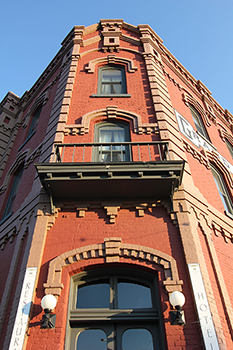
Silver Bow Club founded in Butte. Like the Montana Club in Helena, African Americans often made up a significant part of the staff. ( Butte Daily Miner, Special Edition, January 1, 1886) Grand Union Hotel opened in Fort Benton. Its 11-person staff included nine African Americans. (Ken Robison, “The Jewel in Fort Benton’s Crown: The Grand Union,” Fort Benton River Press Grand Union Edition, November 2, 2007.)
1883
A “golden spike” ceremony on September 8 at Gold Creek, Montana celebrated the completion of the Northern Pacific Railway. Railroad companies across the nation provided steady employment for many African American men, mainly as “ Pullman porters.”
Many members of northern Montana tribes died during Starvation Winter.
Copper boom began in Butte.
1884
Helena businessmen founded the Montana Club in Helena. Several African Americans have worked for this exclusive organization. The most famous was Julian Anderson, who served drinks at the Club from 1893-1953. (“ The Montana Club, Helena, Montana,” MHS; Julian Anderson vertical file, MHS, has a collection of his drink recipes.)
1886
Helena’s African American community convened their annual Emancipation Day celebration on August 2, to commemorate the end of slavery in British colonies, which took effect on August 1, 1834. Stockman Dan Floweree donated $50.00 to help cover expenses for the celebration, and Mayor Theodore H. Kleinschmidt and several other white residents attended. ( Helena Herald, August 3, 1886; Helena Independent, August 3, 1886.)
1887
After making a mark as an abolitionist, daguerrotypist, and entrepreneur in Cincinnati and Minneapolis, James Presley (J.P.) Ball Sr. moved to Helena. He immediately became a noted leader among the city’s African Americans. Among other pursuits, he was active in the Republican Party (he was elected to serve on the Republican Party Central Committee for Lewis and Clark County in 1894), and served as president for Helena’s Afro-American Club. At his J.P. Ball & Son studio he took many images of white and black Helena residents and events, including the laying of the cornerstone of the State Capitol building. He moved to Seattle in 1901, eventually dying in Hawaii in 1905. His photographs provide deep insight into of turn-of-the-century Helena. Examples of his work can be viewed at an online exhibit at the Cincinnati Historical Society. (James P. Ball, vertical files, MHS; The Colored Citizen, May 10, 1894; Deborah Willis, ed., J.P. Ball, Daguerrean and Studio Photographer, xiv-xix)
1888
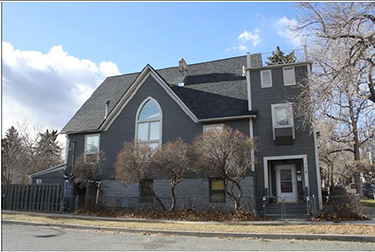
The Helena black community founded the St. James African Methodist Episcopal Church. The center of social life for many African Americans, it continued as a congregation through the 1940s. ( Helena Weekly Herald, September 27, 1888, p. 7; Helena, MT—Churches—African Methodist Episcopal Church vertical file, MHS.)
1889
Montana became the 41 st state .
1890
The census reported 142,924 people in Montana, including 1,490 identified as African American.
The internationally-acclaimed Fisk University’s Jubilee Singers performed a series of shows across the state in early May 1890, benefitting several churches. Stops included Helena, Livingston, Deer Lodge, Boulder, and Anaconda. ( Helena Independent, May 15, 1890; Anaconda Standard , May 6, 1890.)
1891
Its congregation began construction of the first Union Bethel African Methodist Episcopal (AME) Church building in Great Falls. A second church replaced the original in 1917. The church represents patterns of black community growth in the western U.S., and is closely tied to the historical development of the African American community in Great Falls. In 2003 it was listed in the National Register of Historic Places.
1893
The Panic of 1893 devastated the state’s silver mining industry. Nearly one-third of Montanans lost their jobs as banks failed and mines closed.
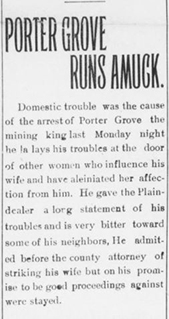
The Montana and Illinois Gold Mining Company incorporated to develop claims in the Townsend area. The owner, Charles Porter Grove, traveled the eastern United States to attract capital from African American investors. Unfortunately, the mines never made any money. Grove began to exhibit erratic behavior, and in 1911 froze to death in a gulch near Radersburg. Later, more successful African American concerns in Montana included the Afro-American Mining and Milling Company (incorporated in 1906, with properties near Butte) and the Bernice-Red Rock Mining Company (founded in 1908, with property in Jefferson County near Bernice). (Certificate of Incorporation of Montana and Illinois Gold Mining Company, August 5, 1893, S2007-03, Montana Secretary of State, Business Services Bureau Records, ID# D002152; Helena Independent, February 23, 1894, p. 5; Montana Plaindealer, April 12, 1907, p. 1; Helena Daily Independent, January 7, 1911.)
African American Emma Wall and her white husband John Orr married in Glendive. On their wedding night they were forcibly “alabastined” and “ebonized” by a mob, and given 24-hour notice to leave town. ( Glendive Independent, June 1893 and Kansas City Gazette, May 2, 1895. Montana Historical Society Clippings file: Glendive early June 1893.)
U.S. District Judge Hiram Knowles appointed Libby resident and Montana’s first black attorney, John D. Posten, U.S. Commissioner to the District Court.
1894
Montana’s first black newspaper, The Colored Citizen , was published in Helena from September 3 to December 15, 1894, chiefly to advance the city’s case for designation as the state capital.
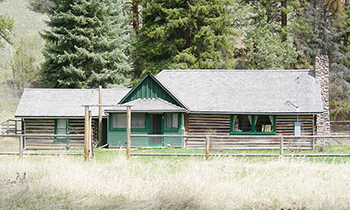
Former slave Annie Morgan settled on an abandoned fox farm near Philipsburg. In 1913, she filed a homestead entry for the property she shared with her white common-law husband, Joseph “Fisher Jack” Case. The Morgan-Case Homestead was listed in the National Register of Historic Places in 2005.
1896
Butte’s black residents established the Afro-American Club of Butte City as a social outlet to pursue interests in music, literature, and science. Anacondans founded the A.J. Campbell Afro American Club in their city two years later. ( Anaconda Standard, October 4, 1898, p. 3. )
Lewis and Clark County officials hung William Biggerstaff for the murder of boxer Richard Johnson in Helena. ( Anaconda Standard, June 10, 1895, p. 7 ; Anaconda Standard, April 5, 1896, p. 5 ; Great Falls Weekly Tribune, April 10, 1896, p. 2 . Also see MHS Research Center Photo Archives images #957-610, #957-611, #957-612; and #957-613.)
1897
Soldiers from the Twenty-fifth Infantry stationed at Fort Missoula rode bicycles from Missoula to St. Louis, Missouri—approximately 1,900 miles—in forty days. (United States Army Twenty-fifth Infantry Regiment, vertical files, MHS.)
1900
1,523 African Americans listed in census for Montana (243,329 total population).
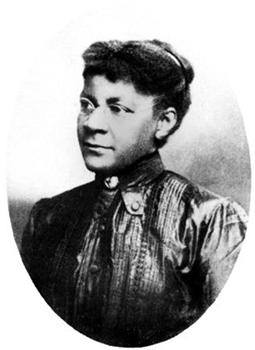
African American Sarah Gammon (Brown) Bickford became owner of the Virginia City Water Company upon the death of her husband Stephen. She ran the utility until her death in 1931. ( Madisonian, March 22, 1900, July 24, 1931; Madison County History Association, comp., Pioneer Trails and Trials: Madison County, 1863-1920, pp. 305-306 .)
1901
An African Methodist Episcopal Church congregation organized in Billings, meeting at 302 North 24 th Street. The church building, called Wayman Chapel, moved to the south side in 1916 and served the community until 2013. The congregation continues to be an active part of the Billings community.
In June, congregants laid the cornerstone for Shaffer’s Chapel African Methodist Episcopal Church on the southeast corner of Idaho and Platinum Streets in Butte. ( Anaconda Standard, June 9, 1901.)
According to the Butte City Directory, Bethel Baptist Church, a black congregation, organized in Butte in July 1901. It later moved its church to 217 West Mercury, the site of the original AME church.
1902
The New Age, published from May 30, 1902, to February 1903 , represented the interests of the black residents of Butte, Montana. In the inaugural edition the editors, John W. Duncan and Chris Dorsey, declared their intention to establish a statewide network of reporters dedicated to bringing the news of the African American community throughout Montana to readers in Butte.
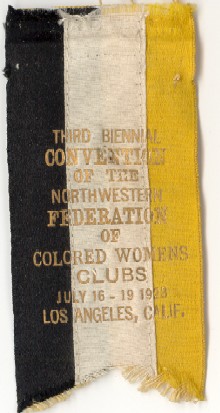
The Afro-American Women’s Club was founded in Butte, perhaps the first black women’s organization in Montana. Though soon forced to disband, it re-emerged as the Pearl Club in 1918 to help support the American cause during World War I, and became instrumental in creating the Montana Federation of Negro Women’s Clubs. Other black women’s clubs included the Phyllis Wheatley Club (Billings), the Dunbar Art and Study Club (Great Falls), and the Pleasant Hour Club (Helena). (Montana Federation of Colored Women's Clubs, Montana Federation of Colored Women's Clubs records, 1921-1978, MC 281, MHS.)
Vaudeville stars Bert Williams and George Walker gave three performances at Sutton’s New Grand in Butte. Williams was the most popular African American entertainer of his era, highly regarded for his singing, dancing, comedy, and composing. A reporter from Butte’s black newspaper, The New Age, noted “A (great) many attended the three performances. This is evidently the best colored play that has yet played a stage in Butte.” Members of Butte’s African American community gave a dinner in their honor. ( The New Age, May 30, 1902, p. 4.)
1903
In June 1903, members of Anaconda’s Allen Chapel AME church laid the cornerstone and moved an abandoned school building donated by the Anaconda Company to the city’s downtown to serve as a permanent home. ( Anaconda Standard, June 8, 1903, p. 3.)
In May, President Theodore Roosevelt visited Montana, and African Americans in Montana gave speeches and gifts in honor of his visit; in Helena Roosevelt received an ebony and silver trowel to “continue to spread the cement of human kindness to all mankind”, while in Butte he was given a pair of scales because it was given by citizens who had “weighed his every act” and that Roosevelt had been “so evenly balanced in the scale of justice". His Butte appearance also featured a speech by C.F. Jones, who represented African Americans in the city. ( Helena Daily Independent, May 28, 1903; Anaconda Standard, May 28, 1903.)
1906
African American Joseph B. Bass began publishing the Montana Plaindealer in Helena, which ran from Mar. 16, 1906 to Sept. 8, 1911. The editors supported the Republican Party. Other black-owned newspapers were The Colored Citizen (which began and ended in Helena in 1894, and existed mainly to support Helena in the capital fight) and The New Age (published in Butte from 1902-1903). (Montana’s African American Heritage Resources website, Newspapers page; Rex C. Myers, “Montana’s Negro Newspapers,” Montana Journalism Review 16, 1973, pp. 17-22.)
1909
National Association for the Advancement of Colored People was founded in New York City.
Congress Passed the Enlarged Homestead Act .
The Montana legislature passed a law making marriage between whites and non-whites illegal. The Montana Legislature repealed the law in 1953. ( Montana Plaindealer, February 12, 1909, p. 1; Loralee Davenport, “A Journey toward Sovereignty and Security: The African American Community of Butte, Montana from 1885-1955,” on file at the Butte-Silver Bow Public Archives, 2001, p. 72.)
Black citizens in Helena commemorated the 100 th anniversary of Abraham Lincoln’s birth. Lincoln’s birthday was celebrated annually by Montana’s African American communities. ( Montana Plaindealer, February 12, 1909, p. 1.)
1910
The Census listed 1,834 African Americans in Montana (out of a total population of 376,053).
The black parishioners of Helena’s Second Baptist Church (Ebenezer Mission) received blueprints for their new church building to be located at 1260 Harrison Avenue. Mrs. Mamie Bridgwater served as an active member of the church, which often met in her home prior to the church building’s construction. ( Montana Plaindealer , October 21, 1910, p. 4. )
1911
Butte’s Socialist Mayor Lewis J. Duncan appointed African American Frank Cassels as city policeman. Not long after, the Butte City Council rejected his appointment, as well as four other police officers. ( Daily Missoulian, September 13, 1911, p. 1.)
1912
Last Chance Club organized in Helena “for the social improvement among its members, literary and dramatic entertainments, and benevolent work among those in need of assistance.”
1913
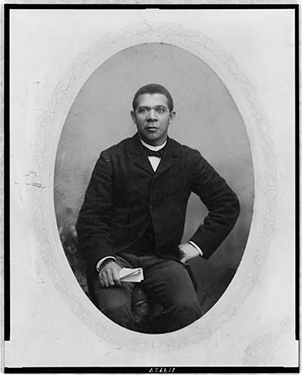
Booker T. Washington lectured in Billings, Bozeman, Butte, and Helena (where he was introduced by Governor Samuel V. Stewart) on black and white relations in the United States. Washington called for accommodation between the races: “I believe there is room enough, justice enough, and good sense enough to enable the two races to live here side by side and work out their own destinies.” Blacks and whites together attended his lectures in the state, and he was hosted by members of black and white organizations in each town. ( Billings Daily Gazette, March 4-5, 1913; Bozeman Daily Chronicle, March 4, 6-7, 1913; Anaconda Standard, March 6-7, 1913; Butte Miner, March 6-7, 1913; Helena Daily Independent, March 8, 1913.)
On April 4, 1913, a mob in Mondak lynched African American construction camp worker J. C. Collins for killing Sheridan County Sheriff Thomas Courtney and Deputy Sheriff Richard Burmeister. Newspapers reported that Collins killed them when they attempted to apprehend him for assaulting the wife of a fellow camp worker.( Wibaux Pioneer, April 18, 1913, p. 2; Yellowstone Monitor, April 10, 1913, p. 1 ; Poplar Standard, April 10, 1913; Culbertson Searchlight, April 11, 1913; MHS Photograph Archives, PAc 75-78.37 and PAc 75-78.38.)
1914
On November 3, 1914, Montana men voted 53 to 47 percent in favor of equal suffrage. That year Montana (and Nevada, which also passed a suffrage amendment in 1914) joined nine other western states in extending voting rights to non-Native women. (Indian women would have to wait until passage of the 1924 Indian Citizenship Act to gain access to the ballot.)
World War I began.
1916
The controversial movie Birth of a Nation played in Montana theaters, and protests against its depictions of African Americans were held in Helena and Butte. ( Anaconda Standard, January 26, 1916; Helena Independent , February 22 and 25, 1916.)
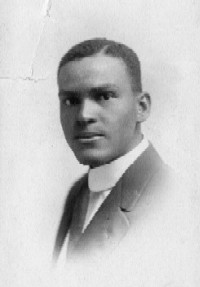
Arthur C. Ford of Helena graduated with a degree in mechanical engineering from Montana State College (now Montana State University), making him one of the first black graduates of that school. Ford was later named president of New York City’s Department of Water Supply, Gas, and Electricity, thus becoming the first African American to be appointed commissioner of a New York city agency. Ford passed away in 1985 at the age of 93. His father Nathianel had been a coachman for Montana Senator T.C. Power. ( Helena Independent, May 31, 1916; New York Times, April 17, 1985; Great Falls Tribune June 19, 1950, as found in MC 55, C.B. Power Papers, box 8, folder 9, MHS; Helena Independent Record, February 2, 1953.)
1917
Years of drought began in Montana that ended homesteading boom.
Three black railroad workers- Leslie Fahley (or Foley), Harrison Gibson, and Henry Hall -were hanged in White Sulphur Springs for the murder of a white transient laborer. Four others received sentences from ten years to life imprisonment.
1919
Fifty percent of Montana farmers lost their land over the next six years.
Alice Palmer claimed a homestead in the Lincoln area. She built twenty-two cabins in what would become the Palmer subdivision. Palmer also ran a boarding house in Helena at 199 Ralph Street. (Upper Blackfoot Historical Society, Gold Pans and Single Trees, p. 48-49; Lucille W. Thompson, “Early Montana Negro Pioneers: Sung and Unsung,” Montana Business Quarterly, Summer 1972, pp. 39-42.)
1920
Census for the year counted 1,658 African Americans in Montana out of a total population of 548,889.
1921
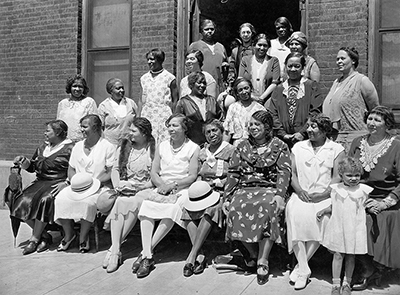
The Montana Federation of Colored Women’s Clubs was founded, joining together ten organizations. (Montana Federation of Colored Women's Clubs, Montana Federation of Colored Women's Clubs records, 1921-1978, MC 281, MHS).
Henry Baker was named postmaster at the state Capitol; he was believed to be the first Montana state official of African American descent. ( Anaconda Standard, July 3, 1921).
The Ku Klux Klan (KKK) organized in Montana. Though it counted approximately 5,100 members at its height, evidence suggests that Montana’s KKK held little influence over the lives of black Montanans, as the organization’s anti-Catholic/anti-immigrant stance outweighed whatever anti-black attitudes were found in the state. ( Christine K. Erickson, “ ‘Kluxer Blues’: The Klan Confronts Catholics in Butte, Montana, 1923-1929,” Montana: the Magazine of Western History , Spring 2003, pp. 44-57.)
1922
Governor Joseph M. Dixon delivered a welcome address to the second annual convention of the Montana State Federation of Negro Women's Clubs in Helena.
James Dorsey, son of 25th Infantry veteran Ephram Dorsey, grew up in Missoula and graduated from the University of Montana in 1922. He was the first African American to matriculate from that institution. Five years later he earned a degree from the University of Montana Law School. Dorsey practiced law in Milwaukee for nearly 40 years & received a Distinguished Service Award from his alma mater in 1963. (See MHS Photo Archives photo # 951-484.)
1927
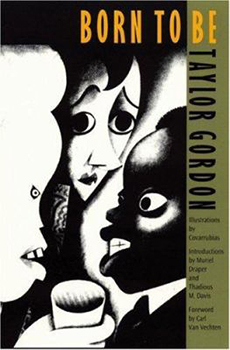
Tenor Taylor Gordon, a White Sulphur Springs native, sang spirituals with baritone/pianist J. Rosamond Johnson at Carnegie Hall. He later wrote a best-selling memoir, Born to Be (1929), detailing his Montana boyhood, participation in the Harlem Renaissance, and advancing critical appreciation of the spiritual as an art form. ( New York Times, February 17, 1927.)
1930
Of the 537,606 people the census listed in Montana, 1,256 were African Americans.
Almost 25% of Montanans received some sort of government assistance.
"Colored Walsh for Senator Club" held a rally in Helena for "members & sympathizers" advocating white U.S. Senator Thomas J. Walsh's re-election. ( Helena Independent, November 2, 1930, p. 6.)
1933
New Deal programs began across the country, including Montana.
Going to the Sun Road opened in Glacier National Park.
Nearly 1,000 African Americans came to Montana to work in the Kootenai National Forest as part of the Civilian Conservation Corps (CCC). Concerns at the local and national levels over integrated CCC camps led to their departure in 1934. (Dwayne Mack, “May the Work I’ve Done Speak for Me: African American Civilian Corps (sic) Enrollees in Montana, 1933-1934,” Western Journal of Black Studies 27, November 2003, pp. 236-245.)
1934
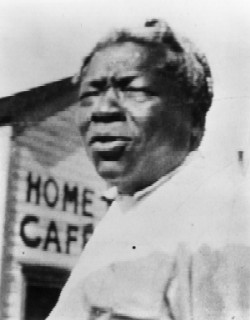
Alice Pleasant, aka Ma Plaz, passed away in Havre. Born in 1850 to parents who were slaves, she lived in Louisiana and Texas before arriving in Montana. Beginning in the 1890s, Pleasant operated a restaurant in the Montana National Bank in Havre. She gained fame for her chicken dinners, quick wit, and generosity. ( Hill County Journal, August 16, 1934; Hill County Bicentennial Commission, Grit, Guts and Gusto: A History of Hill County , (Havre, Hill County, Mont: Hill County Bicentennial Commission, 1976) pp. 306-307.)
1935
African American Naseby Rhinehart accepted a position as athletic trainer for the University of Montana, a position he held for forty-seven years. A pioneer in developing coursework for athletic trainers, he passed away in 1991. ( Great Falls Tribune, June 12, 1991.)
The Butte Colored Giants baseball team won the championship for the first half of the Montana State Baseball League's split season.
1937
A Montana legislative committee considered a civil rights bill “relating to the discrimination between citizens in regard to certain services and employment,” but it did not pass. The Dunbar Art and Study Club of Butte, an African American women’s organization, helped lobby for its passage. (Montana Federation of Colored Women's Clubs, Montana Federation of Colored Women's Clubs records, 1921-1978, MC 281, MHS.)
1939
Nazi Germany invaded Poland.
Daughters of the American Revolution prohibited contralto Marian Anderson from singing at Constitution Hall in Washington, D.C. She performed at the Lincoln Memorial instead.
1940:
Between 1940 and 1943, Montana’s population dropped by 16%.
1,120 African Americans counted as living in Montana in the 1940 census. (559,456 total population).
1941
US declared war on Japan after it bombed Pearl Harbor; Montanan Jeanette Rankin cast the sole vote in Congress against the declaration.
Anaconda newspaper reporter Edward B. Reynolds contributed essays on smelter work to the WPA anthology Men at Work; his older brother Rox Reynolds, also a journalist, was a well-known humor essayist for Seattle & San Francisco newspapers.
1942
Malmstrom Air Force Base was built near Great Falls. It became a conduit for African American migration to Montana. (Malmstrom Air Force Base, vertical files, Montana Historical Society.)
In order to help meet the war effort’s copper quotas, the U.S. military furloughed a battalion of Southern black miner-soldiers to Butte. 8,000 white Butte miners subsequently walked out citing safety issues even though the black soldiers were experienced miners. (Matthew L. Basso, Meet Joe Copper: Masculinity and Race on Montana's World War II Home Front, Chapter 6: “Butte, 1942: White Men, Black Soldier-Miners and the Limits of Popular Front Interracialism,” (Chicago: University of Chicago Press, 2003), pp. 159-194.)
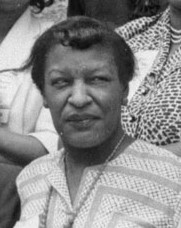
Helena native and registered nurse Octavia Bridgwater enlisted in the Army Nurse Corps. She was one of only several hundred black nurses permitted to serve in the segregated armed forces, and attained the rank of First Lieutenant. (Ellen Baumler, Kate Hampton, and John Boughton, “Haight-Bridgwater House National Register of Historic Places Registration Form,” (Helena, Mont.: MT Historical Society, 2014).)
1950
The U.S. entered the Korean War.
Of the 591,024 people living in Montana, 1,232 were African American.
1953
Cascade County Community Council appointed an "Interracial Committee" to study the matter of racial discrimination. Of particular concern was the treatment of the black airmen at Malmstrom Air Force Base and their admittance to establishments in the city. (Montana Federation of Colored Women's Clubs, Montana Federation of Colored Women's Clubs records, 1921-1978, MC 281, MHS.)
The Montana Federation of Colored Women’s Clubs also pushed for passage of House Bill 73, “An act to guarantee the full and equal enjoyment of all places of public accommodation and amusement; and repealing all acts and parts of acts in conflict herewith.” Critics assailed the measure, proposed by the Great Falls legislative delegation, as “a law against whites,” claiming it would lead to an increase in the African American population, and subsequent loss of property values. Other legislators feared extending the use of public accommodations to Native Americans. The measure did not pass. More successful was a measure to end miscegenation laws. House Bill 8 passed on February 2, and repealed laws that forbade marriage between whites and blacks or whites and Asians. The miscegenation laws were originally passed in 1909. (Montana Federation of Colored Women’s Clubs records, MC 281, MHS; Great Falls Leader, February 11, 1953; Laws, Resolutions, and Memorials of the State of Montana, 1909 , Chapter 49, pg. 57; Laws Resolutions, and Memorials of the State of Montana, 1953, Chapter 4; Miscegenation, vertical files, MHS.)
Butte's black women’s club, the Pearl Club, hosted contralto Marian Anderson. Over 2,000 attended her concert at the city's Civic Center.
After 60 years, Julian Anderson retired from his bartender post at the Montana Club, a private men's club in downtown Helena. ( Helena Independent Record, July 12, 1964, p. 43.)
1954
Supreme Court outlawed school segregation with Brown v. Topeka Board of Education decision.
Excavation began on what became the Berkeley Pit in Butte.
1960
African Americans accounted for 1,467 of 674,767 living in Montana.
1961
Russ Williams, a popular senior at Helena High School, died from an accidental shooting. Williams, an African American, had been senior class president, a member of the National Honor Society, and chosen by the faculty to be a member of the schools "3-7-77" honorary service club. ( Helena Independent Record, January 25, 1961, p. 11.)
1962
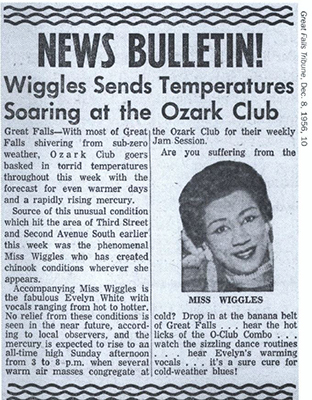
Great Falls’ Ozark Club, “where all were welcome,” burned down. Owned for many years by a former boxer, African American Leo LaMar, it was a place beloved for its live music, exotic dancing, and interracial crowd. Other noted black-owned clubs in Montana’s history included Helena’s Zanzibar Club, Butte’s Silver City Club, and Missoula’s Hawthorne Club. (Ken Robison, “Breaking Racial Barriers: 'Everyone's Welcome' at the Ozark Club Great Falls, Montana's African American Nightclub,” Montana: The Magazine of Western History, Vol. 62, No. 2 (Summer 2012), pp. 44-58, 94-95; Great Falls Tribune, February 5, 2006.)
1964
Senate Majority leader Mike Mansfield of Montana helped pass the Civil Rights Act. ( Don Oberdorfer , Senator Mansfield: The Extraordinary Life of a Great American Statesman and Diplomat , Part 9: “Johnson I: Years of Escalation, Civil Rights Act of 1964,”(Washington, D.C.: Smithsonian Institution, 2015.)
1965
In response to the attack on civil rights marchers in Selma, Alabama, marches in support of civil rights took place in Missoula and Billings. ( Missoulian, March 18-19, 21, 1965; Billings Gazette, March 15-16, 1965.)
1968
Daniel P. Brockman became the first African American admitted to the Montana Veterans’ Home in Columbia Falls. His father had worked all over the West before arriving in Montana, farming in Dawson and Beaverhead counties; he obtained a homestead patent in the latter at the age of 78. The younger Brockman served in both World Wars, earning the Croix de Guerre in World War I. A life member of the Twin Bridges American Legion Post, he lived most of his life in Madison County, working as a ranch hand. He passed away in 1972. ( Hungry Horse News, December 20, 1968, February 15, 1972; Bureau of the Census population schedules, 1870, 1880, 1910.)
1970
The Census revealed 1,995 African Americans living in Montana out of a total of 694,409.
1972
Montanans approved a new state constitution.
1973

African American Alma Jacobs appointed State Librarian, a post she held until 1981. Before that she served as director of the Great Falls Library; during her tenure in that position she was instrumental in getting a new building for that institution in 1967. Born in Lewistown in 1916, she passed away in 1997. “I think a person, whether he is Negro or whatever, is entitled to his own life, without being dumped into a group with predetermined characteristics.” (Alma Smith Jacobs, vertical file, MHS.)
1974
Geraldine Travis of House District 43 (Great Falls) became the first African American elected to the Montana legislature. She served one term. ( Great Falls Tribune, January 12, 1975, November 4, 1976.)
1980
Census revealed 786,690 people living in Montana; 1,786 were African American.
The Atlantic Richfield Company (ARCO) closed their smelting and refining operations in Great Falls and Anaconda; three years later it ended mining in Butte (though it was later resumed on a small-scale basis).
1990
Montana’s population counted as 799,065, out of which 2,381 were African American.
1991
Montana became the forty-eighth state to declare an official holiday in honor of Martin Luther King. ( Helena Independent Record, February 9, 1991.)
1992
The Great Falls chapter of the NAACP hosted a rally on the steps of the Civic Center to protest both the verdict of the Rodney King trial and the riots in Los Angeles that followed. ( Great Falls Tribune , May 4, 1992.)
2000
Of the 902,195 listed as living in Montana in the decennial census, 4,441 claimed at least some African American heritage, including 2,692 who identified solely as African American.
2010
Of the 989,415 listed as living in Montana, 7,917 claimed at least some African American heritage, including 4,027 identified solely as African American.
